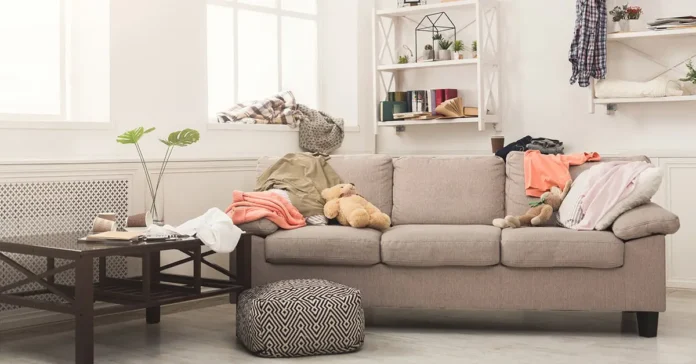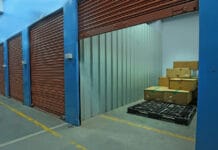Many dream of a clutter-free home, but achieving it can feel overwhelming. That’s where these top 7 decluttering home tips come in. Whether you’re tackling a messy closet, an overflowing garage, or a crowded kitchen, these strategies will help you create a more organized and serene living space. Decluttering enhances your home’s aesthetic and maximizes utility space, making daily tasks easier and more enjoyable.
Using effective techniques like box storage, you can sort and store items efficiently, ensuring everything has its place. By following these practical tips, you’ll discover the joy and peace of a tidy home. Let’s dive into these top decluttering tips to transform your space into a haven of order and simplicity. Say goodbye to chaos and hello to a clutter-free home!
Decluttering Home Tips
Decluttering your home can transform your living space, making it more organized and stress-free. With the right tips, you can tackle clutter effectively and create a tidy environment. Key strategies include using box storage to categorize and store items, maximizing utility space, and regularly assessing belongings to keep only what you truly need.
By implementing these practical decluttering tips, you’ll enhance the functionality and aesthetics of your home. A clutter-free home looks better and promotes a sense of calm and efficiency in daily life. Start your journey towards a more organized and serene living space today.
1. Identify the Problem Areas
It is essential to identify the areas of your home that are the most congested. Look at each of these areas on different days and mentally make note of how much decluttering can be done. The most frequent spots are shelves, countertops, tabletops, and other flat surfaces. These are places where you and your family members spend most of their time on a daily basis.
2. Create a list
Write down the items you use each day throughout the course of a week or a month (excluding consumables, like food, soaps, and paper goods). In the end, compare your list to everything still present in your home. There are four lists you can make, one for everything you must keep at home, one for everything you can store, one for everything you can sell or donate, and the final list for everything you can throw away. Continue checking items off the list as you take your decluttering decisions. Before declutter your home, make a list of items that you want to keep and which ones you want to sell or donate.
3. Make a Decluttering Timetable
Based on how many clutter hot spots you have and how messy they are, set reasonable timelines and decluttering goals. Keep your workload achievable to ensure less irritability. Take a few days to spread out the labour and see who else can help you in your home decluttering. Making a timetable helps you stay on track and on top of your schedule!
4. Sort using the Box Method
Place items in each box in accordance with the list you created as mentioned in step two, then label each box accordingly. Labels are a wonderful way of knowing what is inside the box, especially when you are not using transparent plastic boxes. Alternatively, you can use open baskets and bins if you know what item goes where. This simple decluttering tip keeps the process moving while forcing you to choose ‘what to keep and what to throw away.’
5. Let Necessity takes Precedence
There is no reason to keep an article at home just because you spent a lot of money on it. Put something aside in storage space if you believe you will need it later or that it will become fashionable again. Remember to only get what you need when you go shopping. If you do not bring items and clutter into your home, it will not accumulate. Just keep what you need and not because it was purchased.
6. Apply the Six-Month Rule
Note how you are making use of the objects in your home. If you have not used them in the past six months, it is likely that you will not find a use for them again.
There are, of course, exceptions. You do not have to throw away everything you have not used in the past six months; you can always place them in a self-storage unit. For instance, items that fall under categories like seasonal products, special occasion clothing, and family mementoes or souvenirs can all be stored in a self-storage unit. Declutter your home and store the household items which is not required for two to three months.
If you are having trouble deciding if you will make use of the objects, here are a few questions that can help you decide:
- Can I use the item in multiple ways?
- Can you think of something you want to do with it this week if it is a single-use item?
- If it is so valuable, why haven’t you used it in the last six months?
7. Keep items closer to their Usage Space
Place items that you intend to keep closer to where they will be used while sorting. It is preferable to categorise items such that the items you plan to keep are closer to the area where they will be used or stored after the decluttering process is complete. For example, bigger kitchen appliances like microwave ovens or other devices that cannot be placed in the kitchen itself can be kept closer to the kitchen for easier access. While declutter your home place all the items in a manner.
It takes a lot of work to declutter an entire house, whether you are downsizing or just trying to live more simply. When decluttering your home, concentrate on one specific region before moving on to a room and then a zone. You will grow in confidence as you demonstrate measurable achievement at each level and become more driven to work.
Final Words for Decluttering Home Tips
By following these decluttering home tips, you can transform your living space into a clutter-free haven. Regularly sorting and storing items with box storage solutions helps maintain order while maximizing utility space ensures every item has its place. Consistently applying these strategies will not only enhance the aesthetics of your home but also promote a sense of calm and efficiency in your daily life.
Decluttering isn’t a one-time event but a continuous process that brings lasting benefits. Embrace these tips, and you’ll enjoy a more organized, serene, and functional living environment. Start today and experience the positive impact of a clutter-free home.
FAQs
A: Start with a plan. Decide which area to tackle first and set clear goals for what you want to achieve.
A: Break tasks into smaller, manageable ones. Completing each step boosts motivation and keeps you on track.
A: Consider donating, recycling, or selling them. This not only clears space but also benefits others or the environment.
A: Keep only the most meaningful pieces. Digitizing photos and letters can preserve memories while reducing physical clutter.
A: Use storage solutions like bins and shelves. Labelling everything ensures easy access and keeps things tidy.
A: It’s helpful to declutter every few months to maintain a clutter-free environment. Regular sessions prevent accumulation.
A: Follow the “one in, one out” rule. Whenever you bring in a new item, consider removing an old one to maintain balance.
A: Assign tasks to each family member based on their preferences and abilities. Making it a team effort can make decluttering more enjoyable.
A: Explore popular methods like the KonMari Method or the 4-Box Method to find one that resonates with your decluttering style.
A: Establish daily habits such as tidying up before bed. Regularly reviewing and organizing your belongings prevents clutter from building up again.







